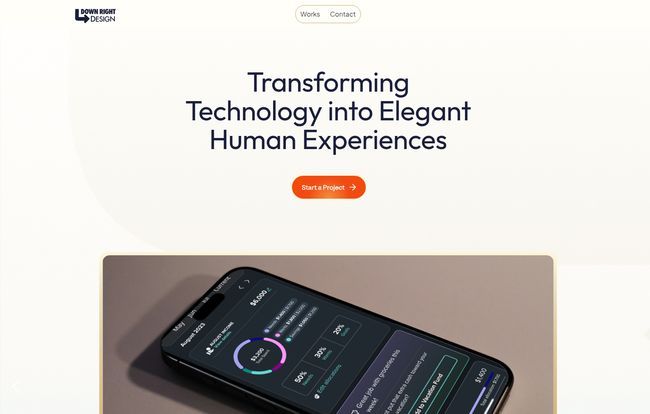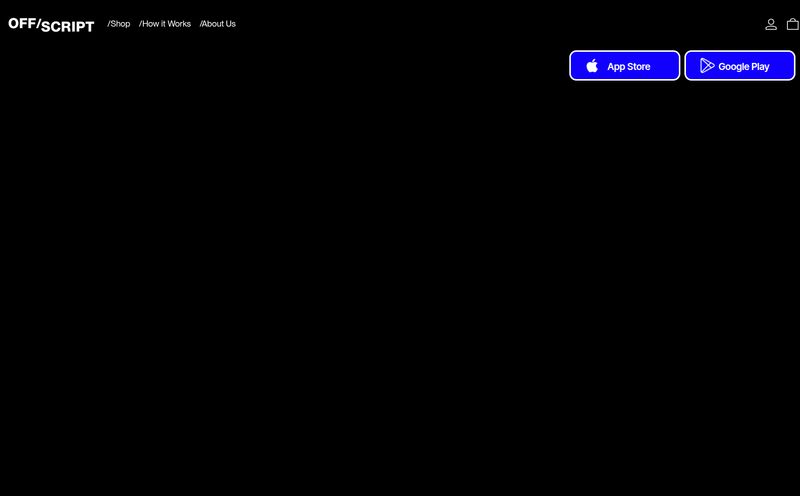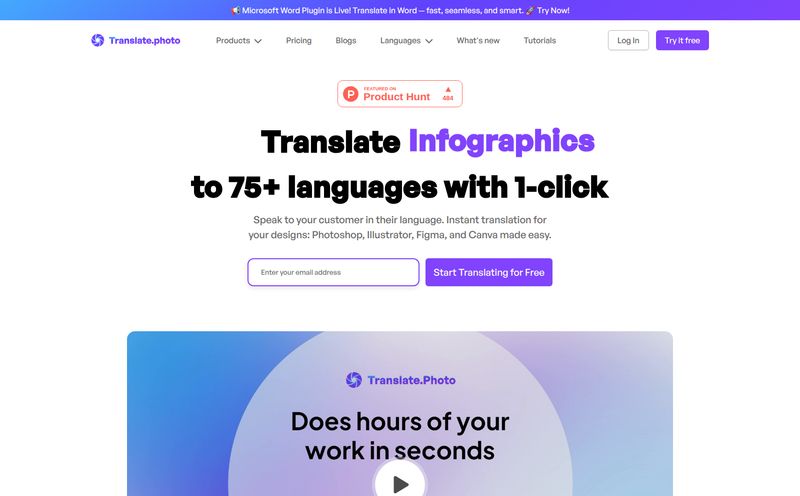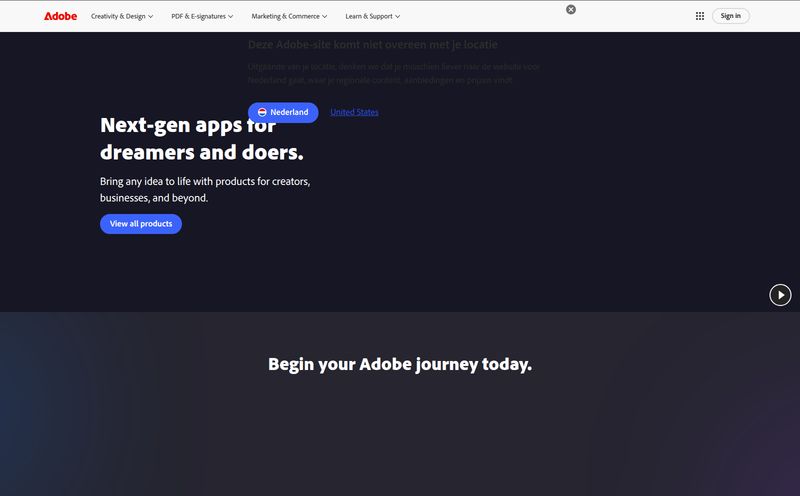If you're building a startup, especially in the wild west of Generative AI, the last thing you need is another headache. You're already juggling code, fundraising, and trying to explain to your parents what a large language model is. Then comes the design phase. Finding a good UX/UI designer who actually gets the nuances of AI is like finding a unicorn. You either burn through cash on a big agency or take a gamble on a freelancer who might ghost you after one revision. Been there, done that, got the t-shirt.
For years, the industry has been stuck in this frustrating cycle. But what if there was another way? A model that gave you top-tier design talent on tap, without the crazy retainers or per-hour billing anxiety. This is the promise of productized design services, and a name that's been popping up on my radar is Down Right Design. They're not just another design shop; they've planted their flag firmly in GenAI territory, claiming to transform complex tech into “elegant human experiences.”
Tall order. So, I did what I do best: I rolled up my sleeves and took a good, hard look. Is this the solution we’ve been waiting for?
So What Is Down Right Design, Really?
At its core, Down Right Design is a subscription-based design partner. Think of it less like hiring a freelancer and more like having a flexible, in-house design team for a flat monthly fee. You pay a set price, and you get access to their design prowess. Simple as that.
But the real kicker is their specialization. They aren't trying to be everything to everyone. Their focus is laser-sharp: UX/UI for Generative AI startups. This is huge. Designing for AI isn't just about making things look pretty. It's about building trust with the user, visualizing complex data streams, and creating intuitive interfaces for technology that can sometimes feel like black magic. They seem to understand that, which, frankly, is a breath of fresh air.
Why GenAI Founders Should Be Paying Attention
I’ve seen so many brilliant AI products fail because their user experience was an afterthought. A powerful engine is useless if no one can figure out how to drive the car. Down Right Design's whole philosophy seems built to solve this exact problem.
Their model is built on two pillars that are music to any startup founder's ears: unlimited revisions and a rapid turnaround.
The “unlimited revisions” part is a game-changer. It removes the fear of ‘wasting’ a designer’s time. You can iterate and tweak until the design is perfect for your users, without watching the clock and your budget tick away. For a fast-moving AI startup that's constantly learning from user feedback, this flexibility is not a nice-to-have; it's a necessity.

Visit Down Right Design
Then there's the speed. They promise a turnaround of about three business days for most requests. In the startup world, that's light speed. It means you can go from idea to testable prototype in less than a week, keeping your development cycle humming along without the design team becoming a bottleneck. This is how you outpace the competition.
How The Magic Happens: A Trello-Powered Workflow
Okay, so how does it actually work? No long onboarding calls or endless email chains. Everything, and I mean everything, runs through Trello. When you sign up, you get a dedicated Trello board where you can drop in as many design requests as you want. You can write briefs, attach wireframes, or even record a quick Loom video to explain your vision.
The team at Down Right Design then picks up your requests—one at a time—and gets to work. Once a design is delivered, you can provide feedback right there in the Trello card, and they’ll get on the revisions. It's an asynchronous dream for teams spread across different time zones or for founders who are just too busy for constant meetings. This model has been popularized by other productized services, and for good reason. It just… works.
The Good, The Bad, and The Trello Board
No service is perfect, right? So let’s break down the real-world pros and cons of a system like this. Based on my analysis and industry experience, here's the honest take.
What's to Love
The biggest win here is the flat-rate freedom. Budgeting for design becomes predictable. You know exactly what you're spending each month, which makes your CFO (or you, if you're a one-person show) very happy. No more scope creep leading to surprise invoices that could sink your runway. Also, having unlimited access to your team members on the platform is a fantastic perk, it makes collaboration so much easier.
And I have to come back to the niche expertise. They’ve worked with companies like Capital One and Credtent. That tells me they're not just some new kids on teh block. They’re bringing serious experience to the table, specifically focused on the unique challenges of making AI usable and even enjoyable.
The Potential Hiccups
Now, for the other side of the coin. The asynchronous, meeting-free approach isn't for everyone. If you're someone who needs to workshop ideas over a long Zoom call and whiteboard session, the reliance on Trello might feel limiting. You lose that spontaneous, back-and-forth brainstorming that can happen in a live conversation. This model prioritizes efficiency over lengthy discussion.
And while Trello is a great tool, being locked into it might be a small annoyance if your team lives and breathes Jira, Asana, or something else. It's a minor point, but something to consider for team workflow integration.
The All-Important Question: What's the Price?
Alright, you’re probably sold on the idea, but you’re wondering about the cost. So I went to their site, clicked around, and… hit a 404 page where the pricing should be. A classic! Look, it happens. Maybe they're in the middle of updating their plans, or perhaps they've moved to a more custom-quoted model where you have to inquire first.
While I can't give you a hard number, services like this typically run a few thousand dollars per month. It sounds like a lot, but when you compare it to the cost of a full-time senior designer (well over $100k/year with benefits) or a big agency project (don't even ask), it's actually quite a value proposition. My advice? Hit their "Start a Project" button and just ask. The worst they can say is a number, right?
Who Is This Really For?
After digging in, I have a pretty clear picture of the ideal Down Right Design client.
This is a perfect fit for:
- Early-to-mid-stage GenAI startups that need to move fast and have a constant flow of design work, from app screens to marketing materials.
- Founders and teams who are comfortable with asynchronous communication and prefer writing a clear brief over sitting in meetings.
- Companies that need to make their budget predictable and want to avoid the financial roller coaster of traditional design procurement.
It’s probably not the best fit for:
- Large corporations with rigid, multi-level approval processes and a need for in-person stakeholder workshops.
- Teams that thrive on real-time, synchronous collaboration and need a designer available for instant calls.
My Final Take
The subscription design model is here to stay, and Down Right Design is making a very smart move by carving out a niche in the exploding GenAI space. They're offering a solution to a very real, very painful problem for a lot of tech founders. They're not just selling pixels; they're selling speed, flexibility, and specialized expertise wrapped in a predictable package.
It’s a bold model, but for the right company, it could be the unfair advantage that helps them turn powerful technology into a product that people genuinely love to use. And in today's market, that’s everything.
Frequently Asked Questions
- What kind of designs can I request from Down Right Design?
- You can request a wide range of digital designs, including UX/UI for mobile apps and web applications, AI interfaces, and other digital experiences. Since they specialize in GenAI, they're particularly adept at creating designs that make complex AI functionality intuitive for users.
- How fast is the design turnaround, really?
- They advertise a rapid turnaround of approximately three business days for most design requests. This speed is a core part of their value proposition, aimed at keeping agile development cycles moving without design bottlenecks.
- What if I don't like the initial design?
- That's where the "unlimited revisions" promise comes in. You can provide feedback on the delivered design, and they will continue to iterate on it until you are completely satisfied with the result. This removes the risk of being stuck with a design that doesn't fit your vision.
- Can I pause or cancel my subscription?
- Yes, the service is designed to be flexible. You can pause your subscription if you have a slow period and don't have enough design work to fill the queue, and then resume when the workload picks back up. You can also cancel if your needs change.
- How does the Trello-based project management work?
- Once you subscribe, you get access to a private Trello board. You add all your design requests as cards on this board. You can add as many as you like. The Down Right Design team will work on them one by one, moving them through stages like 'Designing' and 'Ready for Review' as they complete the work.
- Is it truly 'unlimited' requests?
- Yes, you can add an unlimited number of requests to your queue. However, they are completed one at a time. The total output per month depends on the complexity of your requests and how quickly you provide feedback for revisions.


